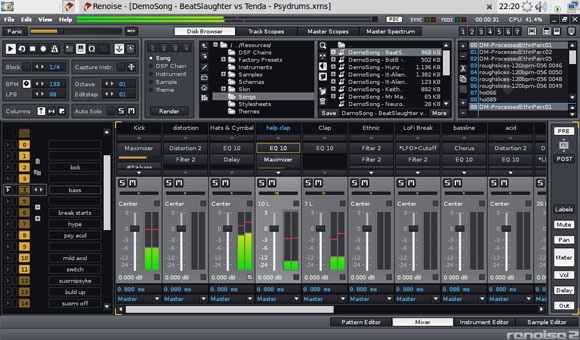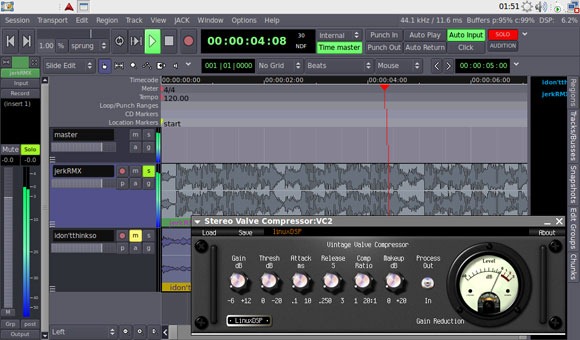Ah, there’s nothing like bleeding-edge laptop performance. And to really convey to your audience that you’re indeed playing live, there’s nothing like glitches, dropouts, and crashing in the middle of a live set. It brings that homespun, digital authenticity to your performance, as you…
Okay, who am I kidding? You may be longing for a more stable, predictable, controllable mobile music rig. One way to get there is with the Linux operating system. The problem, however, is that if you don’t know what you’re doing, that setup can wind up being less stable, not more stable. Because Linux is about freedom and endless choice, you have the “freedom” to combine software in ways that … uh, doesn’t actually work.
I’m all for continuing to document ways of improving your Linux experience. At the same time, part of the free software business model – even according to the die-hards at the Free Software Foundation – is that custom configuration and distribution is a reasonable way to make money.
The best-available plug-and-play Linux music solution right now, hands down, is Indamixx. It’s got basically everything going for it:
- A highly-tweaked Transmission OS, as developed by 64 Studio
- Based on Ubuntu, so you can install recent Ubuntu packages for maximum software compatibility
- Carefully-tuned, custom real-time kernel for maximum audio performance
- Bundled with some great proprietary software, too, specifically ArdourXchange so you can import AAF files from your Pro Tools session – making your free software and proprietary software coexist peacefully
- LinuxDSP suite of mastering effects and plug-ins, specially tuned so they’ll work well even on Intel Atom-powered netbooks
The surprise: with the setup tuned in advance for you, Linux can be the friendliest out-of-box experience of any OS for music performance – seriously. Don’t get me wrong – it’s possible to get glitch-free performance out of Windows and Mac OS X, too. But Linux does offer a level of control and inter-application connectivity, as well as uniquely-strong performance on certain audio interfaces, that makes it a strong choice.
With tools like Pd and SuperCollider and the superb Renoise now on Linux, there’s no reason you can’t migrate your live performance rig to Linux – even if you choose to keep your production tools on another OS.
Normally priced at US$69, the Indamixx digital download is on sale for $49, and if you use sale code CDM, you get it for US$39. You have to purchase by January 19, and you have to use “CDM” as the code when you check out.
What you need to run it: Any PC netbook or laptop (and even UMPC/MID machines) should work. Note that Macs are not yet supported in this release; they’re trickier to dual-boot, but that support should come in the future. (If you know what you’re doing, it is possible to dual-boot the Mac, and honestly if you know your way around EFI and drivers I expect you could even use this distro.)
I’m not getting any money out of this deal, but I’m hoping for something far more valuable – it’d be great to have a little community of Linux users here on CDM so we can share tips with one another. As with, frankly, any OS, compatibility requires testing and tweaking. (That’s true even on the Mac, with a relatively limited hardware selection.)
There’s also a USB key version, though it’s just as easy to buy or reuse a USB key of your own and use that.
I can certainly say, having tried various Fedora, SUSE, and Ubuntu configurations, I think the Indamixx/Transmission setup is the most painless and audio-friendly out there.

